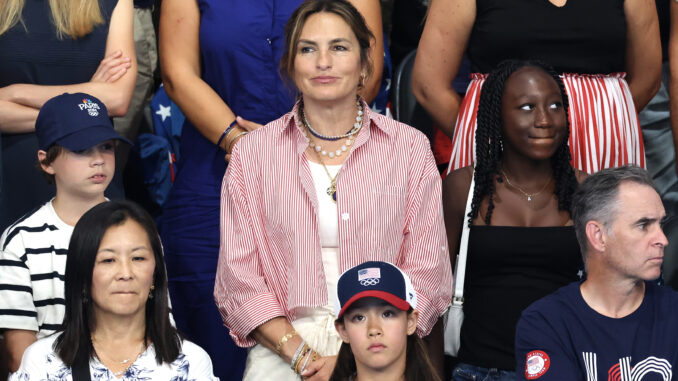
Four Souls, Two Chairs: Sharing Space, Sharing History with Mariska Hargitay and Her Siblings
The premiere of a documentary about Jayne Mansfield, Mariska Hargitay's mother, is not just another red carpet event. It’s a deep dive into a legacy, a wrestling with the past, and a shared experience of family, grief, and enduring love. The image of Mariska Hargitay and her three siblings, Zoltan Hargitay Jr., Mickey Hargitay Jr., and Tina Hargitay, crammed into just two chairs to watch the premiere of "Mansfield 66/67" is more than just a quirky seating arrangement. It speaks volumes about their unique bond, the enduring shadow of their mother's life and tragic death, and the intimacy with which they continue to navigate the complexities of their family history.
Consider the weight of history each sibling carried that night. Jayne Mansfield, a blonde bombshell and Hollywood icon, was a force of nature, a vibrant and controversial figure. Her untimely death in a car accident in 1967, which Mariska, a child of just three, miraculously survived, irrevocably shaped the lives of her children. For each of them, the documentary represented a chance to confront, perhaps understand, and even reclaim aspects of their mother's story. To sit apart, in separate chairs, would feel isolating, a denial of the shared burden and the shared love that connects them.
The act of sharing those two chairs can be interpreted as a symbol of familial solidarity. It signifies a conscious choice to lean on each other, to draw strength from their collective presence. The tight squeeze forces physical closeness, mimicking the embrace of family and the shared experience of navigating a world that often saw them as extensions of their mother's fame. It’s a subtle act of defiance, a reclaiming of their narrative within the larger story of Jayne Mansfield. They are not just individuals watching a movie; they are a family, united by blood, loss, and the powerful, lingering memory of a woman who continues to captivate the world.
Furthermore, the limited space could also represent the emotional limitations they've had to navigate throughout their lives. The trauma of losing their mother so young, coupled with the constant scrutiny of the public eye, might have fostered a sense of needing to huddle together for protection. The shared chairs become a metaphor for the constrained emotional space they may have experienced, a space where privacy was a luxury and shared understanding a necessity.
The discomfort, perhaps even the humor, of the situation cannot be overlooked. Cramming four adults into two chairs is inherently awkward, and likely elicited a few knowing glances and shared smiles. This shared discomfort, however, becomes another layer of their connection. It's a reminder that even amidst the serious task of confronting their family history, they can still find moments of levity and connection. It highlights the enduring power of family dynamics and the ability to find humor even in the face of profound sadness.
In conclusion, the image of Mariska Hargitay and her siblings sharing two chairs to watch the Jayne Mansfield documentary is far from a simple seating arrangement. It is a poignant and multifaceted symbol of familial love, shared grief, and the enduring legacy of a remarkable woman. It speaks to the burdens they carry, the strength they draw from each other, and the intimate ways they continue to navigate the complexities of their unique family history. It is a reminder that even in the glare of the spotlight, the bonds of family can provide solace, support, and a shared space to remember, to understand, and to heal. They were not just watching a movie; they were sharing a deeply personal and profoundly moving experience, together, side by side, in the only way they truly knew how.
